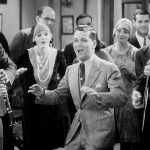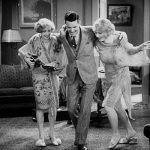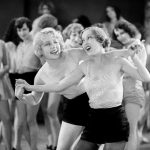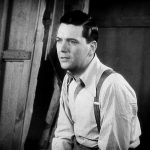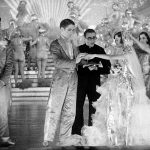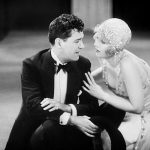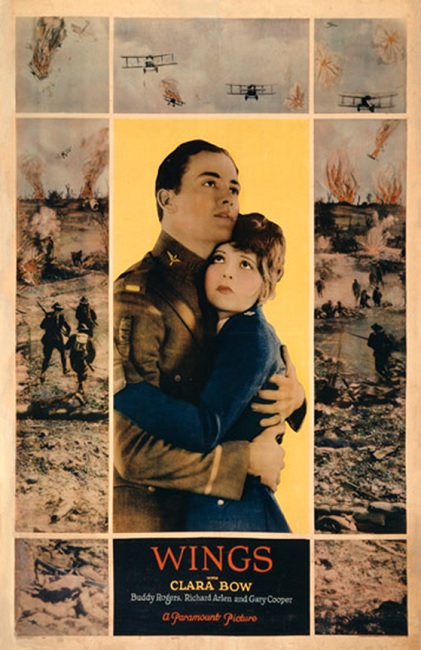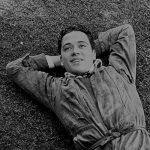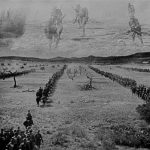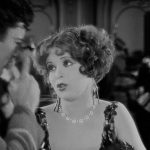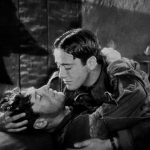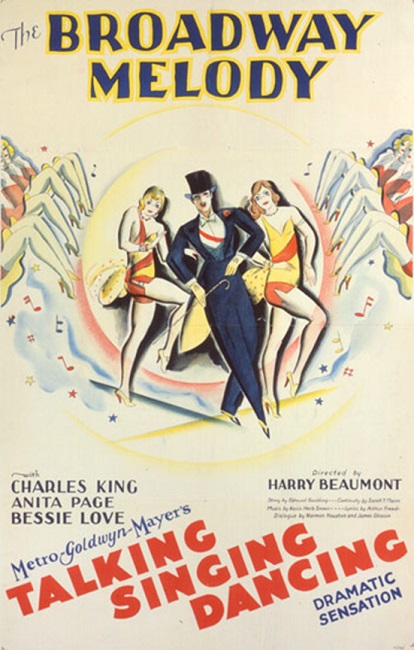


The Broadway Melody – 1928 – 1929
The second movie to win Outstanding Picture was The Broadway Melody of 1929. (as opposed to The Broadway Melody of 1936, 1938 and 1940) It starred Anita Page, Bessie Love and Charles King. I was actually a bit confused as to why this movie won an Academy Award. Granted, I did not see any of the other nominees, so I could be mistaken, but it seemed to me that it was a pretty unremarkable film.
The acting was passable, but it was billed as a musical. For the most part, they seemed to take their one good song (the title song of the film) and just sing it over and over again. Yes, there were other songs, but they were so unmemorable, that I have trouble recalling any of them.
That being said, the film did have some redeeming qualities. The plot was simple on the surface, but there was a subtlety to it that really came out in the development of the characters. The things that they did and the reasons behind their actions and motivations became interesting to watch.
The plot revolves around two sisters, Harriett “Hank” and Queenie (Love and Page) who have a vaudeville act, and who try to make it big in New York. Hank is in a relationship with songwriter, Eddie (King) who writes a big hit song and dance number which he wants to give to the sisters.
But, too bad for you, Hank. Queenie is prettier, and everybody, including Eddie, falls madly in love with her. I guess it just goes to show that in show-business, it is better to be pretty than to be talented. (Though, in truth, I found both actresses to be equally pretty.)
Like I suggested, sometimes, especially in the latter half of the film, the characters’ motivations were the most interesting thing to watch. There was complexity and subtlety to the drama. The sisters displayed palpable depth when they made personal sacrifices to protect each other from situations that could have easily torn them apart. King did a good job in his portrayal of Eddie as he tried to protect both of the sisters from the consequences of his shifting affections. As much as I wanted to dislike his character, I ended up liking him in the end.
Queenie’s motivations were particularly well written. She didn’t seem very smart at times, and got by mostly on her looks. But when she saw that Eddie was falling for her, knowing that her sister was in love with him, the only way she could think of to effectively spurn his affections without letting Hank know what Eddie was doing, was to recklessly accept the attention of a wealthy admirer for whom she had no feelings. The more Eddie pursued her, the wilder and more reckless her behavior became. Of course, all Hank and Eddie saw was Queenie turning into a wild partyer.
In the end, though, everyone is happy… except for Hank. Queenie leaves show-business to be with Eddie and Hank has to find another girl to replace her. Hank loses her sister in the act, loses her man, and is almost left alone to fend for herself. She tries to put on a brave face, but it is clear that she is no longer as happy as she had been at the beginning of the film.
For me, the problem with the movie is that I was ready for a musical with more than one catchy tune, and a message that was more than “Only the pretty girl finds happiness.”
Interesting note: This was the first Academy Award winner that had speaking. The sound quality of the DVD was not the greatest. I believe this was because the film is pretty old and recording quality back then was not the same as it is now.
Also, interesting to note: This film was also originally released as a silent film, because many theatres at the time were not equipped to show films with sound.
Adendum – It has been a few years now since I first watched this movie. I just watched it again for the 4th time, this time because Bessie Love was nominated for Best Actress for playing the role of Hank.. I have to say, I have developed a new appreciation for the drama inherent in the film. The relationship between Hank and Queenie is a wonderful one. The lengths to which they go to protect each other, to give each other happiness, was touching. And I have to make special mention of the scene in which Hank spurns Eddie, challenging him to fight for Queenie’s love. She is still in love with him, and yet she pushes him away, saying she wouldn’t marry him if he was the last man on Earth, and maybe not even then. The two end up screaming at each other. When he storms out of the room, and she is utterly alone, she then has to humble herself even further by calling her uncle, who is also her agent, and tell him she wants him to pair her up with someone other than Queenie. She crushers her own dreams so that Queenie and Eddie can be happy together. Bessie Love really sold the scene, and I have to respect her for that.
